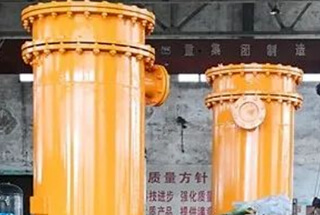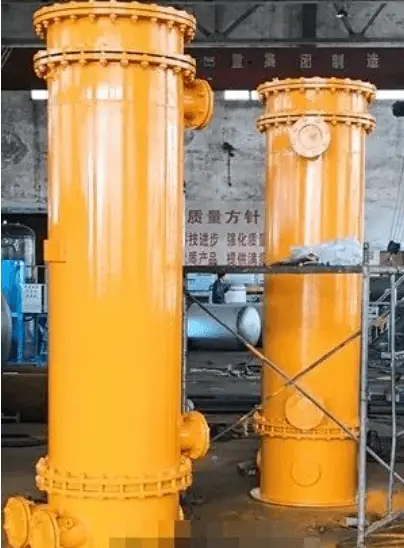
Have you ever wondered how vital machinery keeps cool under pressure? Enter the oil cooler: an unsung hero that ensures turbines and engines run smoothly by regulating their temperature. This article delves into the mechanisms and applications of oil coolers, highlighting their essential role in maintaining optimal performance and preventing overheating. By reading on, you’ll uncover the types of oil coolers, their working principles, and their critical function in power systems.

The oil cooler is a cooling equipment for turbine oil that is used in conjunction with the steam turbine in power systems. It has a smooth tube surface design and utilizes circulating water as a medium for heat exchange. This helps to maintain the oil temperature at the bearing inlet within the specified range, thus ensuring normal operation of the unit.

During normal operation of the steam turbine generator unit, some energy is consumed due to bearing friction, which leads to an increase in the temperature of the lubricating oil. If the oil temperature becomes too high, the bearing may become soft, deform, or even burn.
To ensure proper operation of the bearing, it is important to maintain the lubricating oil temperature within a specific range. Typically, the oil temperature entering the bearing should be between 35-45°C, and the temperature rise of the oil exiting the bearing should be around 10-15°C.
To achieve this, the oil that exits the bearing must be cooled before it can be reused for lubrication. This is where the main engine oil cooler comes into play.
The main engine oil cooler is used to cool the lubricating oil of the main engine. It operates by exchanging heat between the hot lubricating oil and the cool cooling water. By adjusting the flow of the cooling water, the temperature of the lubricating oil can be effectively controlled. Additionally, due to the high temperature of the rotor, especially at the steam inlet side of the high-pressure cylinder, the journal of the oil cooler also transfers heat outward, and the lubricating oil also helps to cool the journal.
Oil coolers are necessary when the lubricating oil needs to be circulated and cooled. In thermal power plants, the oil coolers typically include:
These oil coolers help to regulate the temperature of the lubricating oil used in various parts of the thermal power plant, ensuring the proper functioning of these components.
Typically, the medium used in oil coolers is circulating water. There are two types of circulating water: startup circulating water and closed circulating water. To improve reliability and safety, the cooling medium of oil coolers mostly uses closed circulating water with water quality that is equivalent to demineralized water and condensate.
Oil coolers can be classified into two categories based on their structure: tubular oil coolers and plate oil coolers.
Tubular oil coolers have a poor heat exchange performance, but they are low-cost and take up minimal floor space. These coolers are commonly used for small generator sets.
On the other hand, plate type oil coolers have excellent heat exchange capabilities, but they are more expensive and occupy a larger area. These coolers are mainly used for large generator sets.
The lubricating oil enters the oil cooler from the lower part of the shell and flows alternately through the large diaphragm with a hole in the center and the small diaphragm without a hole. It moves in a zigzag manner outside the pipe and finally exits from the upper oil outlet of the shell. The water is then discharged into the four cooling chambers.
When filling the oil cooler, the inlet and outlet throttle valves and vent valves should be opened, and the outlet valve of the low-pressure oil pump should be used to limit the oil pressure. It is important to not fill the oil too quickly, to drain and close any air at the oil side, and to prevent overpressure on the oil side to avoid damage to the equipment. The cooling water can only be supplied after the oil cooler has been filled with oil.
To adjust the oil temperature, the outlet water valve should be kept fully open and the inlet cooling water should be adjusted. Typically, two oil coolers are operated in parallel, with one as a standby.
When switching the oil cooler during unit operation, it is important to follow the principle of starting it first and then shutting it down. This task should only be carried out by experienced personnel, with supervision from specialized personnel.
It is necessary to monitor the lubricating oil temperature, oil pressure, and bearing bush temperature to prevent misoperation, unit tripping, and equipment damage. The switching process should be done slowly.
When putting the oil cooler into operation, the inlet throttle should be gradually opened to avoid oil pressure fluctuations and to exhaust any air at the same time. When shutting down the oil cooler, the outlet throttle and cooling water inlet valve should be closed.
It is important to have someone monitoring the switching process and in direct contact with DCS personnel to ensure that the air is exhausted and that the process is carried out slowly to prevent oil pressure fluctuations and tripping.
(1) Ensure that all oil coolers other than the one being switched are operating normally.
(2) Gradually close the water outlet valve exiting the oil cooler and open the water inlet valves of the other oil coolers, making sure to keep the oil outlet temperature of the oil cooler within the acceptable range.
(3) Once the oil outlet temperature of the oil cooler is stable, gradually close the water inlet valve until it is completely closed.
(4) Gradually close and exit the oil outlet of the oil cooler, being mindful to adjust the oil temperature and ensuring that the lubricating oil pressure does not fall below the acceptable range until it is fully closed.
(5) After the lubricating oil pressure is stable, close the inlet throttle.








